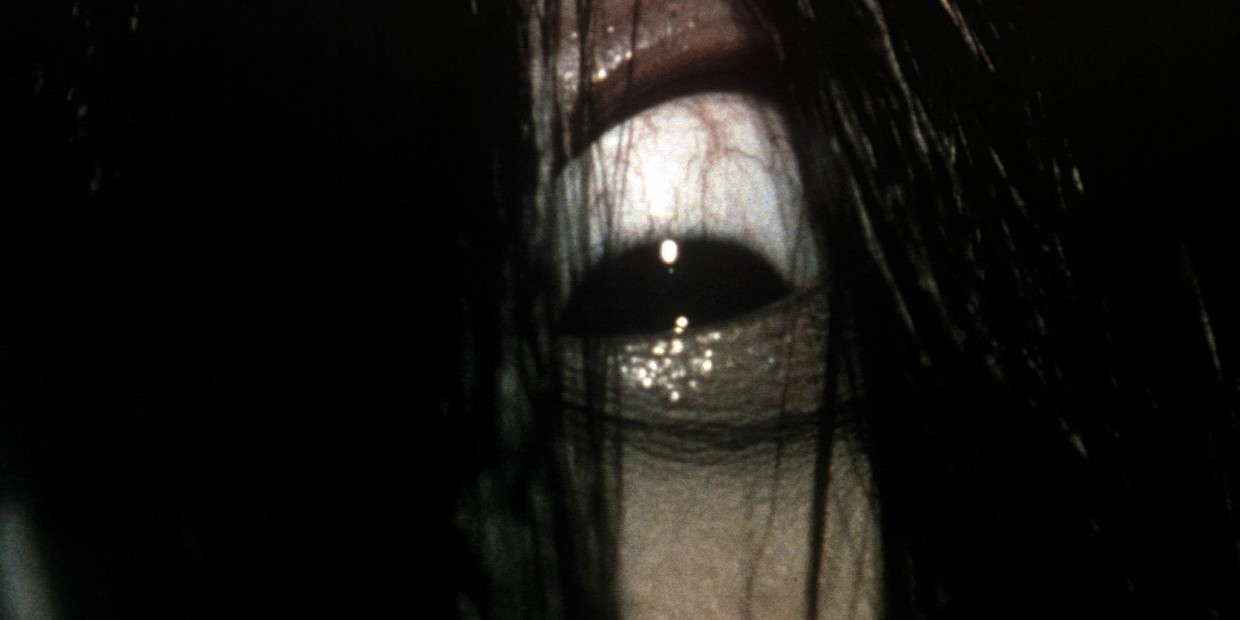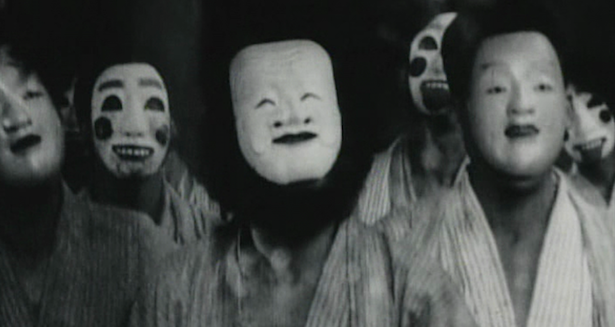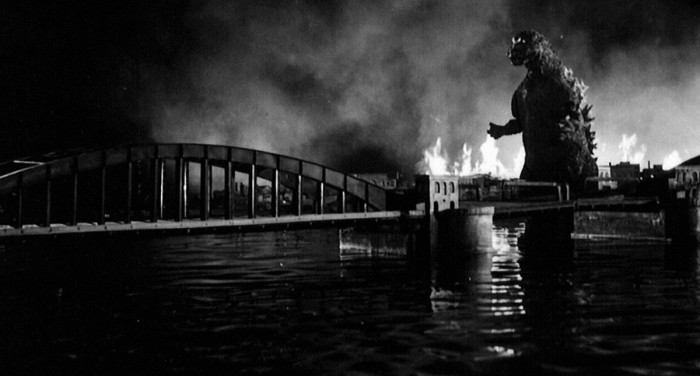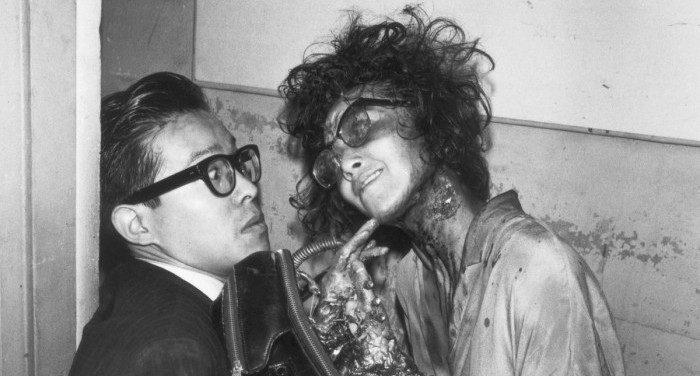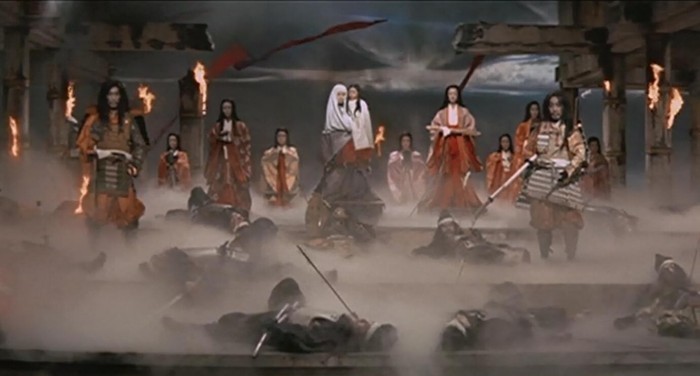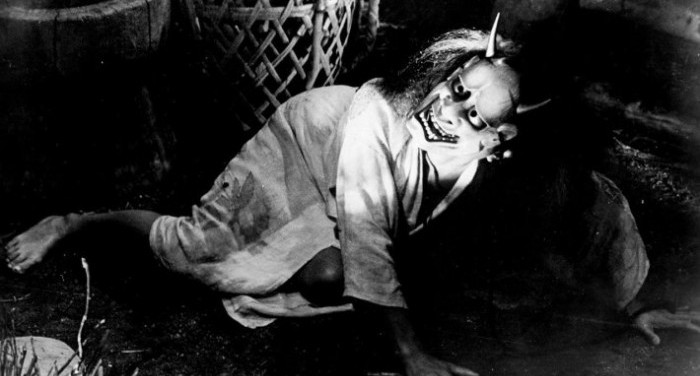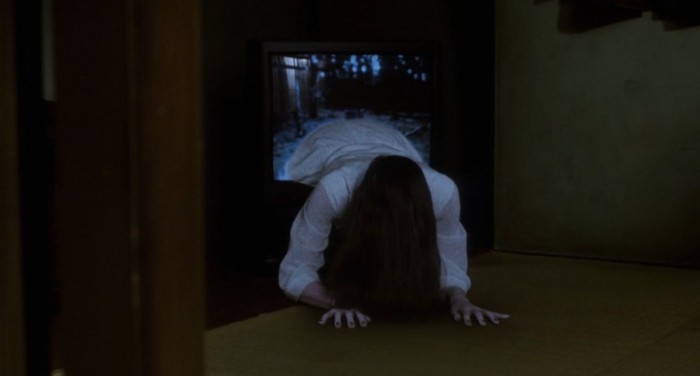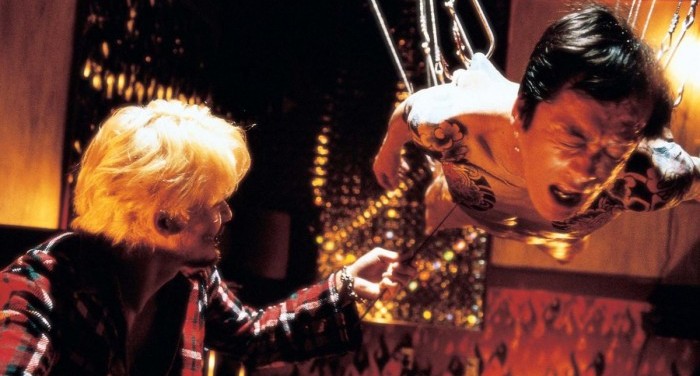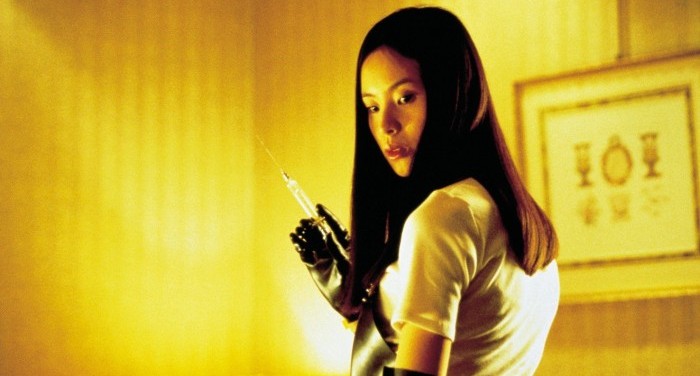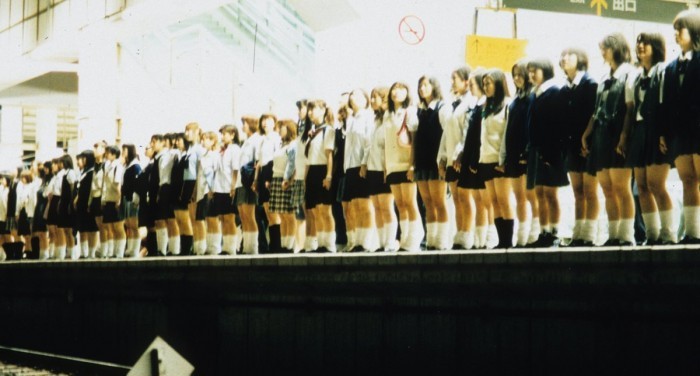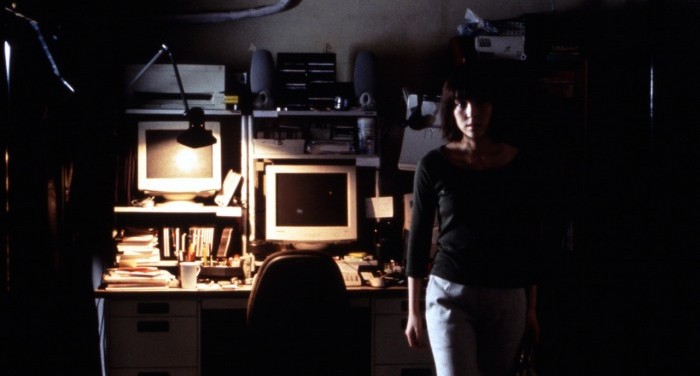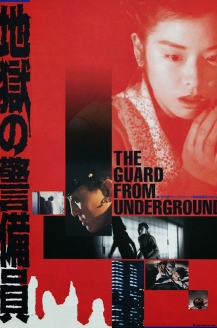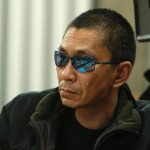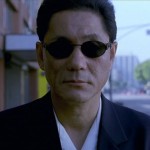From gangster flicks to animation, Japanese cinema has a remarkable track record for taking the genres most regularly (and often inaccurately) associated with inconsequential, youth-targeted escapism and channelling them into mesmerising works that can hold their own against the best and most prestigious pictures of their time. With that in mind, it’s no surprise that the Japanese voice has proven particularly vital to the horror genre, bringing us immaculately crafted, haunting explorations of the sinister and the unknown.
A cultural aspect that may have helped Japanese horror stand out from its Hollywood competition is the nation’s notably different traditional conceptions of death, with, many have argued, a greater acceptance than the west of the impermanence of things. What’s more, the historical hardships endured by the country and the leading role it’s played in bringing the world into the digital era have both factored substantially into some powerful cinematic representations of where we’ve been and where we’re at risk of ending up.
You may notice that the list below shows a clear bias for works released between the lates ’90s and early aughts, with 2001 as an obvious peak year. Though it’s perfectly understandable why anyone would prefer the post-war era of allegorical horror that brought us the likes of Godzilla and the scathing socio-political commentary of Kaneto Shindo (both of which are represented here too), the ‘J-horror’ explosion that occurred near the dawn of this century may well have been the last big bang for horror cinema in any part of the world (said with all due respect to the exciting, relatively recent developments from Korea, France, Spain, the US and the UK, to name but a few).
The period was something of a golden age for domestic filmmakers who caught onto how the world was changing, how we were starting to connect to each other and consume our entertainment in strange new ways, and how the cold efficiency of recent technological developments brought new things to be afraid of. These were prescient works from people who realised that ghoulish entities couldn’t keep haunting mansions and castles forever and that sometimes the most unnerving of answers is no answer at all.
But regardless of when exactly Japanese horror reached its apex, this list should suffice as evidence of a long, rich national history of profoundly chilling cinema. Honourable mentions go to Kuroneko (1968), Cure (1997), Visitor Q (2001), Dark Water (2002), Gozu (2003) and Exte: Hair Extensions (2007). Kenji Mizoguchi’s 1953 masterpiece Ugetsu is sometimes thrown into the horror category and, had it been so in this case, it may well have made this list’s top spot. Also, though it admittedly didn’t come particularly close to making the list, one must at least respect the uniqueness and enthusiastic following of House (1977).
10. A Page of Madness (1926, dir. Teinosuke Kinugasa)
A work of sinister yet rapturous derangement, Teinosuke Kinugasa’s silent classic spends almost its entire running time within the dark, claustrophobic confines of its gloomy asylum but its style and structure suggests a dizzyingly unbounded extension of the wild delusions of the patients. This central conflict between the real and the imaginary is explored throughout A Page of Madness with fascinating ambiguity: Does the horror of the film lie in its insane hallucinations or its dark reality? Do these fantasies free the patients from their physical confines or are they what keeps them locked there in the first place? Is this film pro-escapism or anti-escapism?
To add another haunting and playful layer to the proceedings, these quandaries find their seamless equivalents in the escapist illusions of cinema as the film implicitly ponders whether the big screen too is a force that traps or liberates us. So, could the cinemagoer be nothing more than another sad, delusional mental patient delving into fantasy to avoid a grim reality? Maybe, but, at least in the case of this particular page of madness, the medium also grants us a safe environment to explore the grain of insanity that lies in us all. It seems eerily appropriate that Kinugasa’s chaotic celluloid vision is layered and invigorating enough to make you want to lose yourself in it completely.
9. Godzilla (1954, dir. Ishirō Honda)
The original 1954 Godzilla remains one of the few widely remembered giant monster movies that can honestly be considered part of the horror genre – namely because it’s one of the few to use its unavoidably silly premise as more than just an excuse for warm theme park thrills, à la King Kong and even most of the Godzilla franchise. When measured by the standards of those films, the first Godzilla holds up as a perfectly fine blockbuster. But while its iconic monster footage still looks great (compare Godzilla’s slow-plodding presence through the menacing darkness to, say, the wearying visual noise of the Transformers films), it’s only when you pair this spectacle with Honda’s grittier imagery of fire, smoke, wreckage and packed hospitals, and consider the historical context, that the unstoppable creature becomes a figure of harrowing and unfading relevance.
Godzilla’s B-movie surface is suggestive, like a restless nightmare shaped by subconscious trauma. For contemporary Japanese audiences, it was a collective trauma that stemmed from the destruction of war and the horrifying power of nuclear technology. When regarded in light of the existential menace that lies implicitly at the film’s core, Godzilla’s cheesier, clunkier and more dated elements become not only quite forgivable but take on a compelling (and probably unintentional) self-reflexive quality; it’s a Hollywood-esque dream wrapped around an unnerving reality. In its own indirect way, Honda’s Godzilla resonates as an attempt to process the most unthinkable of horrors – the kind that arguably cannot be done justice with a head-on confrontation – and in doing so, makes serious business out of a man in a lizard costume stomping around a tiny model city.
8. Tetsuo: The Iron Man (1989, dir. Shinya Tsukamoto)
On an aesthetic level, Shinya Tsukamoto’s Tetsuo is the worst nightmare of anyone who hates to see people bite their fork when they eat. A mechanised assault on the senses that laughs at your feeble notions of narrative clarity and logic, the film is a dazzlingly inventive but vengeful creation that unleashes grotesque punishment upon the modern man’s fleshy and flawed human form for the ugly world he has made for himself in the name of progress. Amidst a surreal industrial fever dream, we experience the claustrophobic panic of an anonymous protagonist, trapped in a cage of his own making.
It is both easy and highly appropriate to link Tsukamoto’s body horror classic to the haunted technology J-horror films that arrived about a decade later, but seeing how the likes of Ringu and Pulse would swap Tetsuo’s loud and brutal factoryscapes for a focus on more compact and sleeker devices, perhaps the film’s true successors are those that honour its invigorating evocation of modern day excess. Takashi Miike was likely taking notes before he crafted the culturally aware aesthetic intensity of Ichi the Killer, whereas Sion Sono’s underrated social satire Exte: Hair Extensions arguably does for hair what this film does for machinery.
One of the many distinct elements of Tetsuo is how brazenly unsexy it is, draining the human body of all its beauty in scenes of physical and moral rot while evoking torturous intercourse in its employment of the protagonist’s large screwdriver phallus. Still, isn’t the brash notion of a man literally screwing women to death nothing more than a typical carnal power fantasy pushed to its psychotic, motorised extreme? Through such twisted eroticism, Tsukamoto’s confrontational yet energising work seems to acknowledge that the modern man’s drive to push his existence to new limits will likely continue to lead him into a hideous yet sadly alluring future of pure metal.
7. Kwaidan (1964, dir. Masaki Kobayashi)
One of the flat out best-looking horror films ever made, Masaki Kobayashi’s Kwaidan is an immersive anthology film of stadium-sized ambition. Across four supernatural tales of sinister tragedy and poetic irony, the director shows a masterly command of sound, visuals and pacing comparable to Kubrick at his most intimidatingly grand. As in the steeliest scenes from 2001 or Barry Lyndon, Kobayashi’s aesthetics can feel oppressively artificial at times. Just take the staggeringly beautiful sets of the film’s best segment, “The Woman of the Snow”, which hauntingly evoke a world where nature is always watching and no man’s life is wholly within his control.
More generally, this ongoing sense of artificiality and inevitability suggests a strange and mysterious homage to the art of storytelling itself. It seems to be no coincidence, for example, that “In a Cup of Tea”, the cruel tale of an author tormented by vengeful ghosts, is saved for last, as though the writer has finally been devoured by his own fantastical creations. Through these delicately crafted tales of man’s foolishness, persistence, tragedy and mortality, Kwaidan sees the meeting of three worlds – our own folly-filled reality, the unforgiving spirit realm and the predetermined world of fiction – and makes each of them feel like the same bewitching dream.
6. Onibaba (1964, dir. Kaneto Shindo)
Set amidst an apocalyptic 14th century war-torn Japan, the sad, sensual, angry, brutal and darkly comic Onibaba is a romance for bleak, desperate times where resources are scarce, principles are flexible and sex is a basic animal need. Director Kaneto Shindo finds equal poetry in natural landscapes and the human face as he tells an increasingly ugly and undignified tale of age bitter at youth, in which an unnamed older woman jealously tries to shame and scare an unnamed younger woman into staying away from the one man in their vicinity that they don’t feel the need to kill.
But like many of his contemporaries, Shindo used the era of the samurai for a thinly veiled snapshot of his current and recent times. The film’s perverse love triangle is the compelling centre of a hostile web of deception and resentment between the old and young, rich and poor, and male and female that would’ve struck a chord with a Japan still reeling from the devastation of war. And while Onibaba may take the time to touchingly observe the vulnerable human sides of even its perpetrators – in fact, it’s arguably impossible to find a perpetrator who isn’t also some form of victim, and vice versa – there is, nonetheless, undeniable satisfaction in witnessing the comeuppance unleashed in the film’s final minutes, revealing with righteous fury how those who wear the face of a monster for too long may find that face a little difficult to take off.
5. Ringu (1998, dir. Hideo Nakata)
Yep, still holds up. Quite possibly the most influential non-animated Japanese film of the last half a century, Hideo Nakata’s Ringu has become so fundamental to popular perceptions of Japanese horror that the extent to which any given film can be regarded as ‘typical J-horror’ can be determined almost purely by how similar it is to this notorious franchise-starter. And yet, despite so much of its story and imagery being thoroughly absorbed by the collective memory of pop culture – not to mention the plethora of sequels and copycats, including a popular Hollywood remake – the film itself still feels eras ahead of almost any other horror film of its time.
It likely helps that its dread-filled, post-modern vision has grown increasingly relevant as new media developments bring us ever further into the realm of the aphysical. Nakata had the foresight to link this abstract technological realm to those of the mind and the spirits, serving as an ominous commentary on a now digitally-enhanced culture of voyeurism, escapism, instant gratification and dwindling personal connections. That the film has unwittingly become part of the very culture it scrutinises – via its status as a Halloween rental standard and a spooky pop culture reference point – only adds a rich, disorienting level of irony to the proceedings. So make no mistake, Ringu is not akin to the teen slashers it is often lumped with or the shallow, exploitative media that it portrays, but like the deadly video at the centre of its mythology, it is a layered and menacing work to be actively studied and decoded, bearing ever more frightening insight and relevance as the years go by.
4. Ichi the Killer (2001, dir. Takashi Miike)
Though a comfortable candidate for most straight up gruesome entry on this list, Takashi Miike’s vicious, self-reflexive satire is essentially a dark-comedy-crime-thriller that only genuinely becomes a horror film through its subversive process of deconstructing the very things that amuse and thrill us – namely, those two all-important pillars of the entertainment industry that are sex and violence. By eagerly wallowing in these inextricably linked sources of pleasure with as much brutal abandon as its yakuza characters, Ichi the Killer turns modern pop culture into a wearying hellscape of instant gratification, delivering sensory excess to the point of numbness. As beautifully implied by a scene in which a man’s face is painfully stretched by a gleefully sadistic couple, this is a film that sees cruel and horny criminals push the human body to its limits only to find that it cannot handle the demands of the desensitised mind.
Then we have the reluctantly deadly Ichi himself, the one character who seems truly frightened and appalled by where his bloodlust might lead him. Donning a goofy rubber costume as he performs hits under the puppetry of the villainous Jijii, this naïve and emotional patsy suggests a deluded twist on the escapist revenge fantasies of the modern day comic book heroes. He’s a dangerous man-child whose tragic character arc climaxes irreverently with a scene that features him weeping on the floor while being repeatedly kicked by a young boy who once idolised him. In this movingly undignified image and more, Ichi the Killer is that rare gangster film to show unreserved contempt for the genre’s strong tendency towards alpha male bravado. It’s a bitter, emasculating work that initially shocks with its sleazy spectacles of torture and abuse, then poignantly resonates with its suggestion that all this gross depravity may never be enough.
3. Audition (1999, dir. Takashi Miike)
Takashi Miike’s psychosexual magnum opus remains notorious for its excruciating depictions of torture and mutilation – and for good reason too. Horror cinema doesn’t get any more horrifying than the almost unbearably tense climax, in which the young Asami enacts merciless, anatomically precise vengeance upon widower Shigeharu with childish glee. What perhaps deserves a little more attention, however, is the richly layered, carefully composed and steadily paced build-up to the gore, which takes up the majority of the film’s runtime and evokes more empathy towards its two leads than possibly any other entry on this list. Though anyone’s first viewing of Audition will likely be a strikingly visceral experience, this is a film that gets a little more complex, cohesive and human with each revisit.
It’s for more than just enhanced shock effect that Audition seems to start and end as two very different films. At its heart, this is basically a story about conflicting personal fantasies and the personal demons, desires and hang-ups they contain. In the case of Shigeharu, this internal narrative is a search for love that plays out like a bizarre deconstruction of your average rom-com, in which he seeks to find his new wife via a mock audition process for hopeful actresses. As this somewhat dubious tale progresses, oblique signs of guilt, fear and anxiety come bubbling to the surface like subconscious thoughts, while Shigeharu’s fragile rom-com narrative is gradually confronted by Asami’s psychotic delusions, countering the self-centred male fantasies of the film’s first half by making grotesque art out of the male body. Like Shigeharu, Asami acts out her fantasies as a means of liberation from loneliness and a sad past, though, granted, her emotional outlet involves a lot more needles and piano wire.
This underlying conflict between two troubled psyches allows for a surprisingly subtle and significant work that evolves and changes shape as it goes along, leading up to a devastating final half hour with a piercing impact that goes beyond the obvious revulsion.
2. Suicide Club (2001, dir. Sion Sono)
A funny, fascinating, thoughtful, trippy and troubling mental overload of a movie, Sion Sono’s astonishing breakthrough feature is a social satire from the early aughts that seems to almost prophetically encompass this entire loud and lonely young century while indicating an untraceable horror lurking amidst all this cultural noise. Channelling national remorse and emotional repression through its tale of an inexplicable rise in mass suicides, the film gets ever more profoundly baffling the longer its investigation into this terrible phenomenon goes on, with every red herring and dead end only further cementing the cruel cosmic comedy of life. Replete with sardonic quirkiness, Suicide Club is tragic because it’s comical and vice versa.
As authorities stumble around fruitlessly for a root cause that, at best, only ever materialises in a maddeningly obscure form, Sono offers a series of striking visual suggestions that society is little more than a crowd of alienated people dragging each other off the same high ledge. Even Genesis, the misleadingly named, theatrical, self-styled psycho who takes credit for the wave of deaths is eventually shown to be just one more symptom of a widespread cultural rot. We don’t know what we’ve done to get us here, the film seems to imply, and trying to go back to how it was before would be like trying to put toothpaste back in the tube. And so, with a nervous but catchy song in its heart, Suicide Club pulls us forward into a grim, paranoid and unpredictable future where interpersonal connections are mere illusions and where the individual and the community alike harbour the same unnerving potential for total self-destruction.
1. Pulse (2001, Kiyoshi Kurosawa)
A solid case can and has been made that loneliness is a fundamental theme to the horror genre, and at least from the span of roughly 1997 to 2002, Japanese cinema showed a better understanding of this than any other nation. The prime example of this phenomenon is surely Pulse, a film where the ultimate horror is not death but eternal existence in emotional isolation. A work of subtle menace that boasts enough hauntingly graceful and grim imagery for several good horror films, Pulse is, at least on a surface level, a loyal work of post-Ringu ‘J-horror’. But what promotes it to the top of a pretty competitive heap is how it takes the subgenre’s prevalent ideas of technological spirits and pushes them into more expansive and disquietingly abstract territory, to the point that Ringu starts to look in retrospect like a prescient early warning to Pulse’s full on journey into oblivion.
In much the way that change usually happens in society, Pulse’s internet-driven apocalypse happens slowly enough to go unnoticed until it’s undeniable. The line between the living and the dead is blurred on several fronts as despondent and detached souls walk the earth, their spirits secretly crying out “Help!” as they gradually fade into nothing, leaving only a temporary black smudge as evidence that they were even here at all. Within this increasingly warped and crushingly bleak reality, Kurosawa crafts a captivating techno-horror that has easily outlasted the now seemingly naïve digital culture and equipment of 2001. After a decade and a half of intimidatingly rapid technological development, Pulse remains perhaps the single greatest cinematic expression of the social disconnect of the Information Age, as well as one of the great evocations of the all-consuming dread of depression and a serious candidate for best horror film – Japanese or otherwise – of the last two decades.
Watch Japanese Films on FilmDoo.

